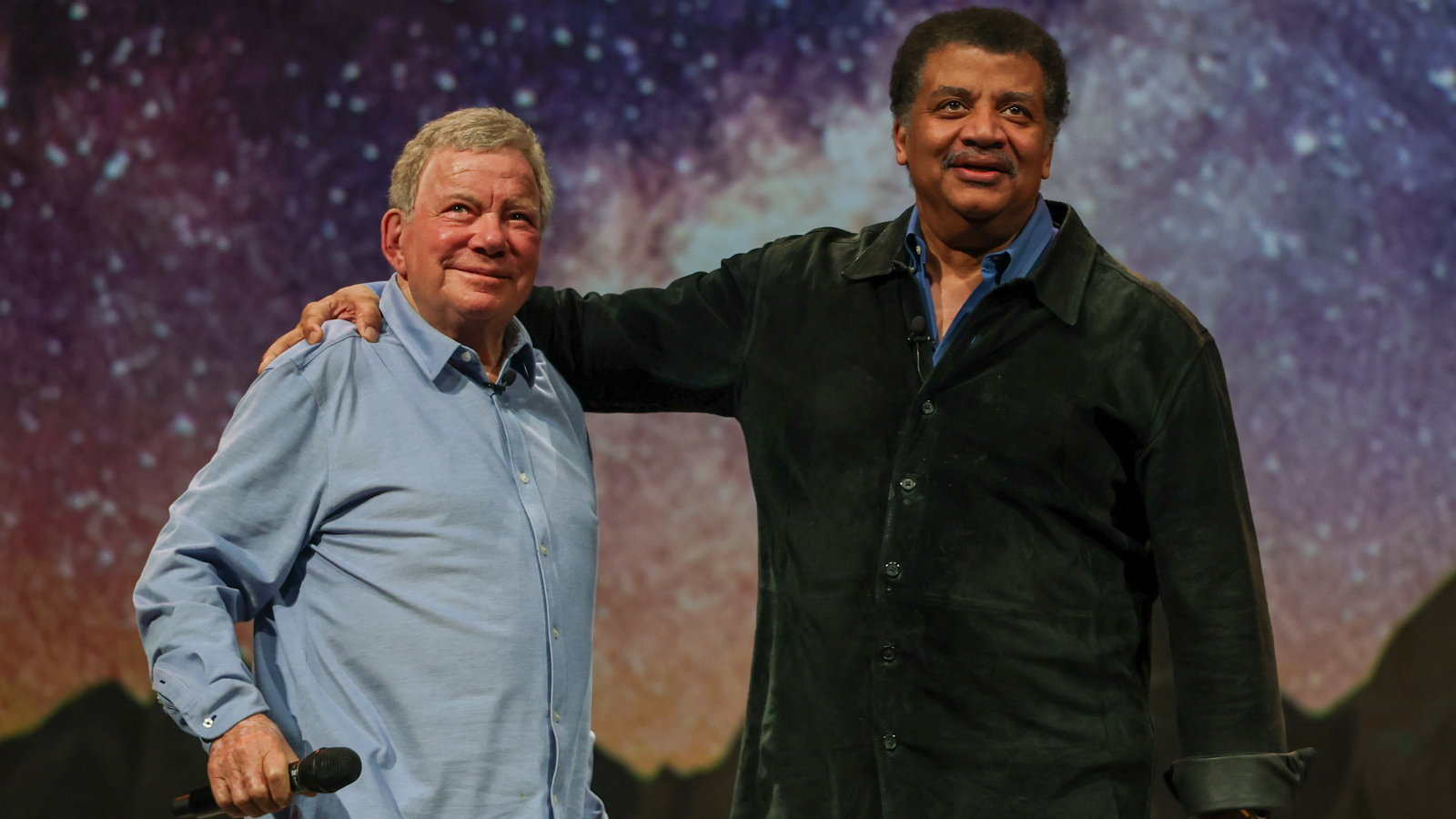Gravity Assist Podcast: Explorer 1 and Jim Green's 'Gravity Assist'
The Gravity Assist Podcast is hosted by NASA's Director of Planetary Science, Jim Green, who each week talks to some of the greatest planetary scientists on the planet, giving a guided tour through the Solar System and beyond in the process. This time, Green talks to NASA's Laurie Cantillo of the Science Division at NASA Headquarters about his own gravity assist, when as an aspiring student he was mentored by the famous scientist James Van Allen, for whom the Van Allen radiation belts are named.
You can listen to the full podcast here, or read the edited transcript below.
Laurie Cantillo: We're going to do something a little different today to launch Season Two of Gravity Assist. We're talking about mind-blowing science discoveries and one of them happened 60 years ago with the Explorer 1 mission, which revealed intense radiation belts wrapped around Earth, called the Van Allen belts. To tell it we're going to turn the tables on our host, Jim Green, and find out about his personal gravity assist and how that relates to the Van Allen belts. 'Gravity assist' is the term we use to describe an event or a person who helped you figure out what you really love to do and forever changed your path in life. So, Jim Green, who or what was your gravity assist? [Happy Anniversary, Explorer 1! 1st US Satellite Launched 60 Years Ago]
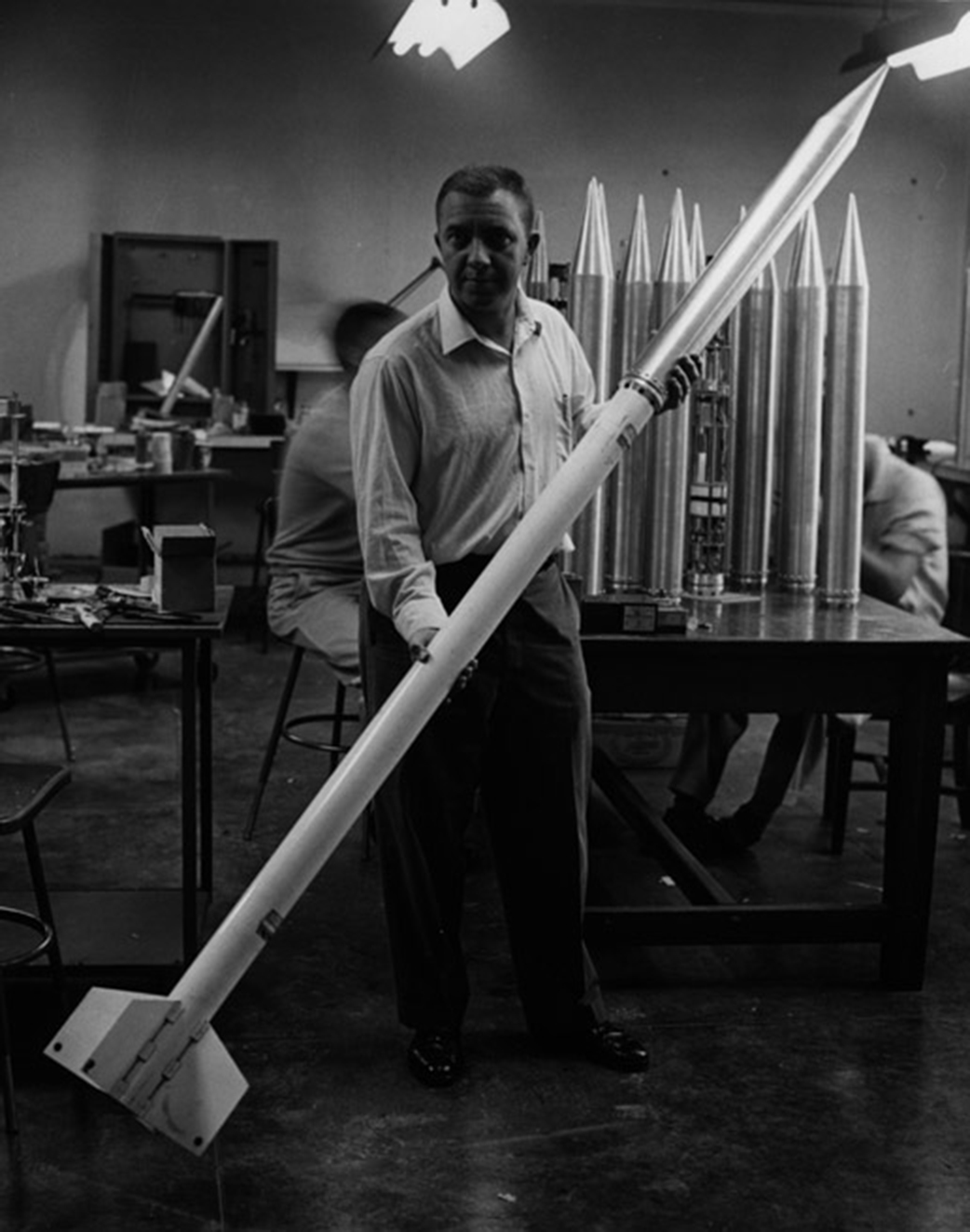
Jim Green: My gravity assists really started in high school. I had a high school chemistry teacher who ended up with the keys to an observatory. Inside was a donated telescope — a 12-inch Alvan Clark refractor — and for you amateur astronomers out there I'm sure your jaws have dropped. [It was a] fabulous telescope. I had it at my beck and call for a couple of years in high school and I made instruments for it. I studied stars, I studied the planets, I took pictures that ended up in Sky & Telescope and I took images of the Sun every day for three months during one summer and three months during another summer. So, at the end of my high school I knew exactly what I wanted to do, which was to go to college and get a degree in astronomy. I went to the University of Iowa and I took Astronomy 101 with about 400 other students. We were taught by James Van Allen, who was the first investigator of NASA's first experiment ever in space, on the spacecraft Explorer 1. So, at the end of the first semester of Astronomy 101 I got an A, thank goodness. In the second semester I had an opportunity to take a small, two-credit course, and so I chose 'Readings in Astronomy' and in the course catalog it said it was taught by "staff." The course started at a designated time in Van Allen Hall, room 701, and when I went to that room and opened the door, it looked like a warehouse. There were printouts all over tables, magnetic tapes, bookcases, [it was] a cluttered room from that perspective. These rooms were storerooms, and I'm standing in the doorway going through this course catalog figuring I must have messed up.
Laurie Cantillo: Wrong place. Wrong time.
Jim Green: And so, from behind the bookcase, Dr. Van Allen said, "Jim, this is the place and you're my only student." So instead of being taught by a grad student, I had a full semester with James Van Allen! And when he found out that I had taken pictures with the Alvan Clark refractor, and in particular the solar set — it was during solar maximum in the late 1960s, early 1970s — he said, "Well, let's do some research with this data. Why don't you look at how fast the Sun spins? Let's do that by looking at the sunspots and how long it takes for them to go around." I had plenty of data to make measurements of the solar rotation. I did the same research that had been done about 70 years earlier and wrote a science paper, with an abstract and introduction and discussions and all of that, and he was the referee. At the end of that semester I knew what research was all about and that gravity assist was absolutely unbelievable.
This connects really well with what this year is all about, which is the 60th anniversary of NASA. It kicked off with our first successful spacecraft called Explorer 1. [At the time] we were struggling to build rockets that worked and got things into space. The USSR was celebrating their launch of Sputnik, which occurred on 4 October 1957, and that was last year's celebration [when] they had their 60th. So, Sputnik went up and here we were on 31 January 1958, when Explorer 1 takes off and gets into orbit. What a fantastic time that was. The press conference was something like 2:30am in the morning at the National Academy. That's when the very famous picture you see of Dr. Van Allen, William Pickering from the Jet Propulsion Laboratory that helped build the experiment and integrate it into the rocket, and then of course Wernher Von Braun, whose Redstone Arsenal team got the rocket into space, [was taken].
Breaking space news, the latest updates on rocket launches, skywatching events and more!
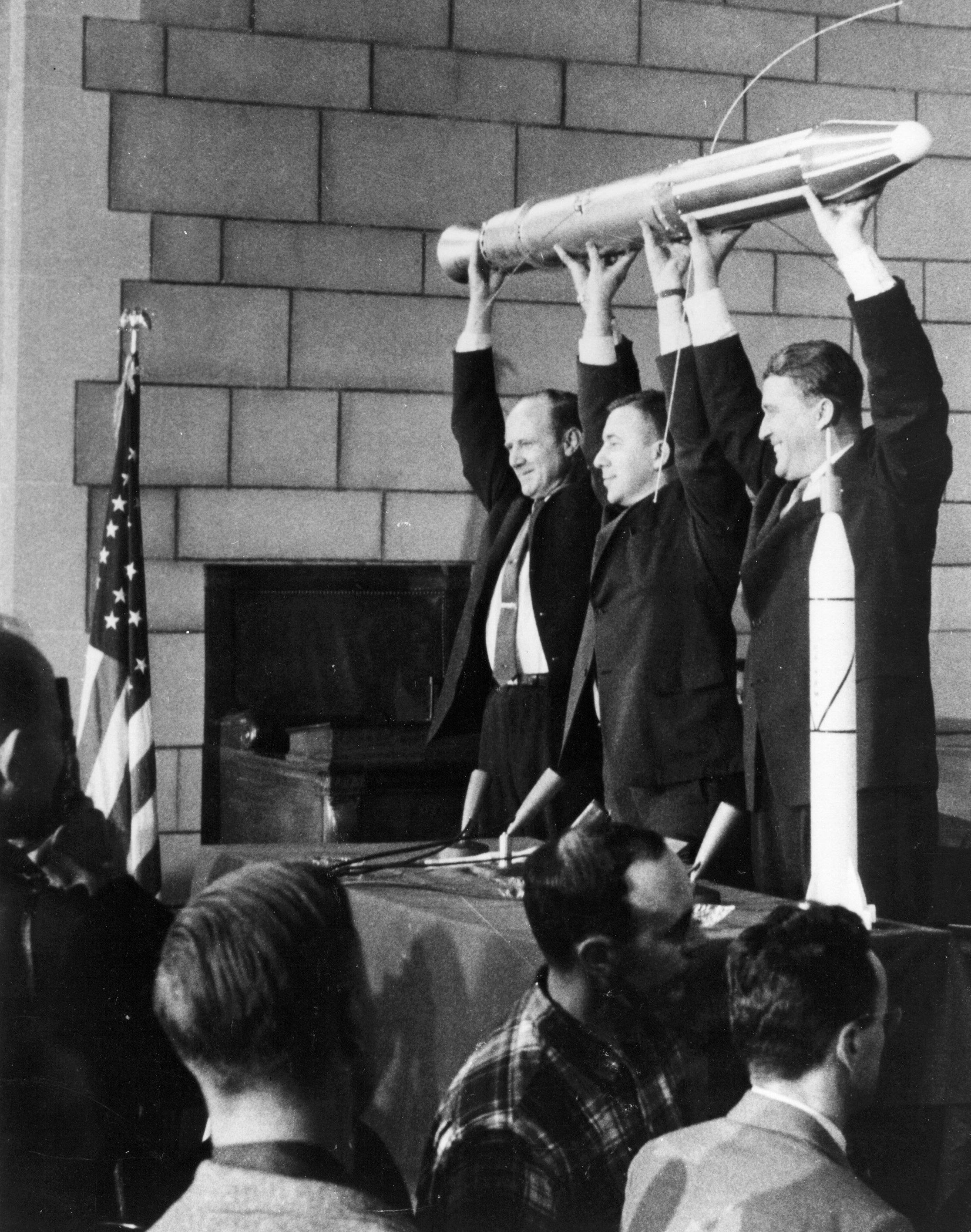
Laurie Cantillo: Wow, and they're holding Explorer 1 over their heads [in the famous photo from the press conference]. Just how heavy is that thing?
Jim Green: That's the third stage and the experiment is inside that. So you had several stages that are a couple of stories tall just to get that little bitty thing into space.
Laurie Cantillo: That's what really launched the Space Race. It was in a sense the competition that really inspired and got people going, but then the fascination that the American public had with space exploration really took off.
Jim Green: Explorer 1 was our first successful attempt and what we found out immediately is that it had things to teach us. The data came back, and Van Allen also had several other Explorers over the following months to get additional data, and by May 1958 he was announcing the results of those instruments, those Geiger-Mueller tubes, on Explorer 1 and Explorer 3 (Explorer 2 didn't make it into orbit). So, Explorer 1 and Explorer 3 told us that there was a set of very high-energy particles racing around our planet's magnetic field above our atmosphere and they were in what we now call the Van Allen radiation belts, filled with trapped charged particles. If you have a magnetic field, it can trap charged particles.
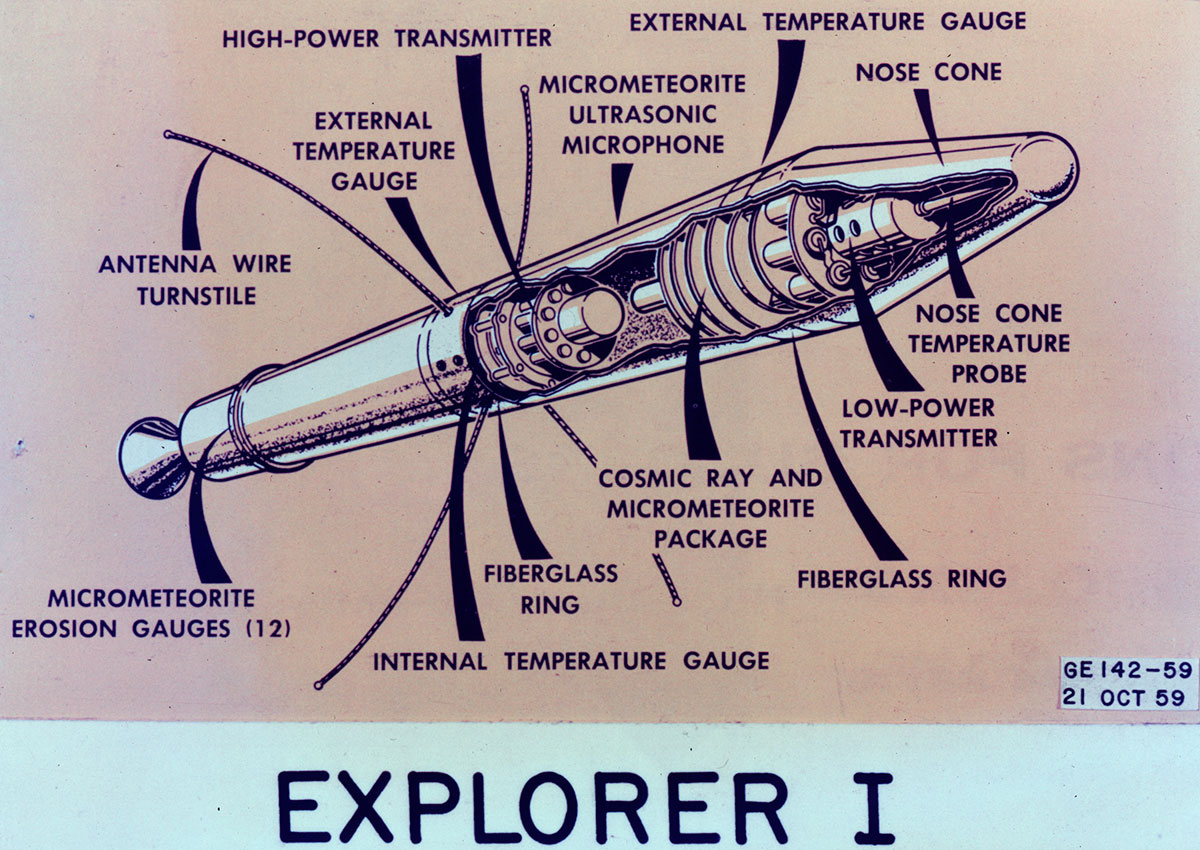
Laurie Cantillo: So, it's a good thing that Earth has this magnetic field, correct? It's what protects us from all of the space weather, from the radiation, from the solar wind. Did we understand back then the significance of this finding?
Jim Green: No, we didn't. It is important that Earth has a magnetic field. The magnetic field does trap charged particles, and as the Sun heats our atmosphere to the extent that the atmosphere becomes disassociated into charged particles and can evaporate into space, then the magnetic field traps those particles and [forms a layer of] evaporated atmosphere that we call the plasmasphere. The Van Allen belts start out in the ionosphere and go out into space where they create the plasmasphere and that allows us to hang on to our atmosphere for long periods of time. So that's just one effect that the Earth's magnetic field has. It happens to all of the other planets that have magnetic fields too. Mars lost its magnetic field and now we know (from NASA's MAVEN mission) that the solar wind has continued to strip away the Martian atmosphere, in particular the oxygen that is disassociated from water, and this has turned Mars into an arid and dry place.
Laurie Cantillo: Jupiter, of course, has intense radiation belts. How do those on Jupiter compare with the ones on Earth and what did NASA have to do to protect the Juno spacecraft?
Jim Green: We've known something was going on with Jupiter since before Explorer 1. Bell Labs had taken radio dishes out to explore how we could use radio-frequency light for communication and as they were doing that they saw two radio-bright things in the sky. One was the Sun and the other was Jupiter. The radio emissions from Jupiter were coming from the particles trapped in the Jovian radiation belts by the planet's intense magnetic field, which is more than 20 times stronger than Earth's magnetic field. It therefore holds really intense particles that spiral back and forth along the magnetic field lines very close to the planet. These particles move so fast they can penetrate the 'skin' [of the spacecraft] and get into the circuits and really cause some problems if we don't take that into account. Juno has this huge vault, we built this bank vault if you will, put all of our sensitive electronics in that [to protect them] and that seems to be working well for us.
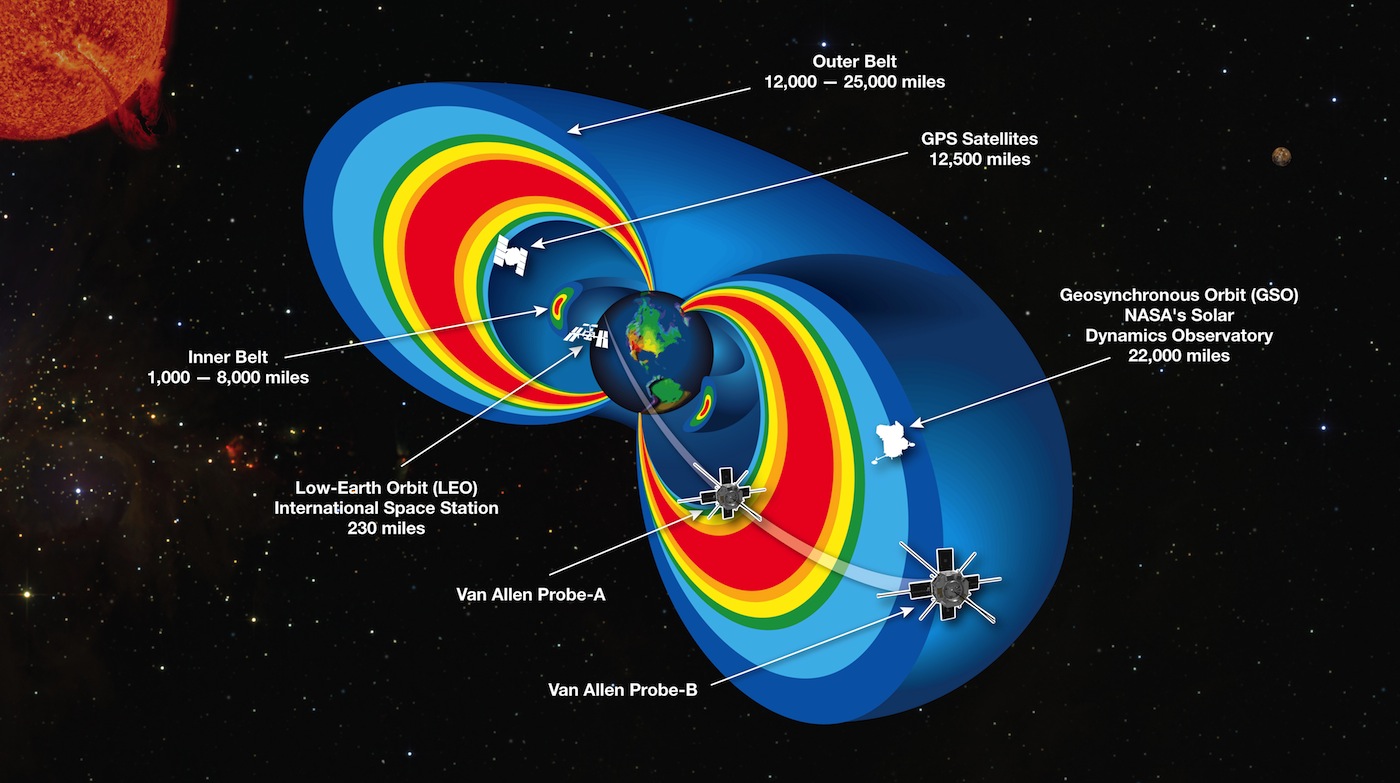
Laurie Cantillo: There is a moon in the Solar System with a magnetic field. What's going on with that?
Jim Green: That's a moon at Jupiter called Ganymede and it has its own magnetic field. What's really spectacular about Ganymede is we think of moons as being smaller objects, but Ganymede is huge and Jupiter is the big planet in our Solar System. To give you an idea how big Ganymede is, it is larger than the planet Mercury. It is the largest moon in our Solar System and it generates its own magnetic field. It also has another unique characteristic, which is that because it was made in the outer part of our Solar System, it is an icy world and therefore because of its interaction with Jupiter's gravitational tidal forces, we believe a lot of that ice has melted inside and that this beautiful moon Ganymede probably has an ocean underneath its ice crust, and we believe the ocean is pretty big, with maybe more water than we have here on Earth. The European Space Agency has this fantastic mission called JUICE, the JUpiter ICy moons Explorer, which is planned to be launched in 2022 and will arrive at Jupiter in 2029, and it will begin orbiting Ganymede soon after that.
Laurie Cantillo: Let's talk more about season two of Gravity Assist. It's going to be full of "mind-blowing science discoveries" — things like exoplanets, frozen geysers on Europa and Enceladus and gravitational waves. We'd also like to ask listeners for their ideas for future Gravity Assist podcasts, so if you have a topic you'd like to hear about, e-mail us at gravityassist@nasa.gov.
This story was provided by Astrobiology Magazine, a web-based publication sponsored by the NASA astrobiology program. This version of the story published on Space.com. Follow us @Spacedotcom, Facebook or Google+.
Join our Space Forums to keep talking space on the latest missions, night sky and more! And if you have a news tip, correction or comment, let us know at: community@space.com.

The National Aeronautics and Space Administration (NASA) is the U.S. government agency in charge of the civilian space program as well as aeronautics and aerospace research. Founded in 1958, NASA is a civilian space agency aimed at exploring the universe with space telescopes, satellites, robotic spacecraft, astronauts and more. The space agency has 10 major centers based across the U.S. and launches robotic and crewed missions from the Kennedy Space Center in Cape Canaveral Florida. Its astronaut corps is based at the Johnson Space Center in Houston. To follow NASA's latest mission, follow the space agency on Twitter or any other social channel, visit: nasa.gov.

